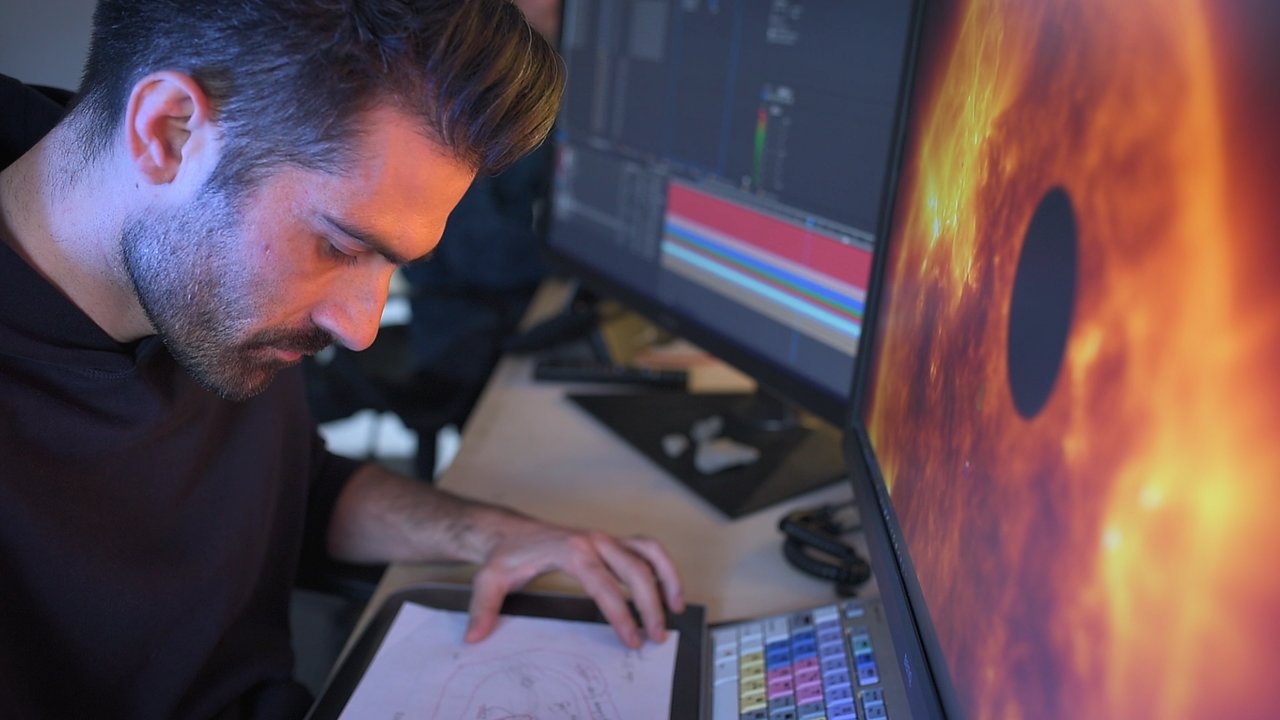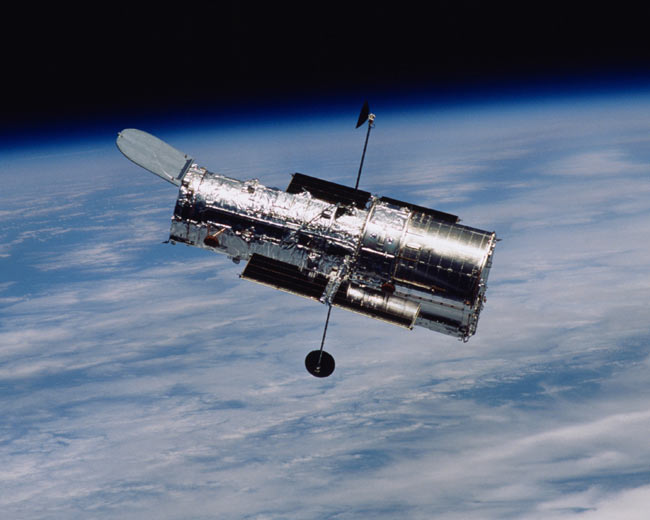How Artists Turn Hubble's Space Discoveries into Gorgeous Stellar Images
Some of the most striking views in astronomy have come from the Hubble Space Telescope. But not all of the data collected by the spacecraft comes in the form of a beautiful photo.
Visual artists play an important role in creating some of the incredible artistic representations based on Hubble's observations. In a recent video, one of those artists walks viewers through how he takes some of the dots and lines captured by Hubble and turns them into striking images to make the science even more engaging. [The Hubble Space Telescope: A Photo Celebration]
"Hubble is a fantastic telescope, but it cannot observe everything," visual artist Luis Calcada said in the video. Calcada is a graphic designer for the European Space Agency (ESA) who works on crafting some of the artistic representations that often accompany news stories about Hubble. The team has been creating illustrations and animations for Hubble since 2000; Calcada has been part of the group for 10 years.
"It collects a lot of data in the form of spectrum, for example, something which is not exactly a 'real' image, and that's why we need to step in and create these catchy illustrations and animations," Calcada said.

The pair aren't given free rein with the images they create. They work hard to make sure their illustrations and animations are as realistic as possible. For instance, when drawing a star, they can't sketch it in whatever shade they want. Because of the relationship between stellar color and temperature, they make sure their illustrations reflect the known stellar temperatures. Similarly, a planet's mass helps to indicate whether it is rocky or gaseous, which directs how the pair depict it.
"We can have a bit of creativity, but always within the physical realm," Calcada said.
They also work with the scientists who have gathered and interpreted the data.
Get the Space.com Newsletter
Breaking space news, the latest updates on rocket launches, skywatching events and more!
"In the team, we have astronomers and scientists that we work always together with them," Calcada said. "It is a constant dialogue with the scientists." [Hubble's Greatest Photos: Astronomers' Picks]
The time frames that Hubble's graphic designers illustrate can range from a few milliseconds to millions of years. And sometimes the time lapse within a single video can change from one to the other. Those can be tricky to capture, but Calcada said those are the more illustrative kind of animations.

Because of the large spans of time, or the enormous distances, involved, it's rare that the designers get to compare their creations to reality. But not always. A few years ago, when the best image of Pluto was only a few pixels across, designers used the science data to create an image of the dwarf planet. The sketch they made with their scanty knowledge of Pluto's thin atmosphere and traces of methane was surprisingly close to the images captured when NASA's New Horizons spacecraft flew by Pluto in 2015.
"It was pretty interesting to compare them when New Horizons arrived a Pluto…and we could actually compare our own illustrations to the real images," Calcada said.
"And it was quite thrilling to see that they were very close to what we represented!"
Along with accuracy, the artists hope to thrill and intrigue, creating art that catches the attention and interest of the viewer.
"We want to create catchy and interesting images because the science is catchy and interesting," Calcada said.
Follow Nola Taylor Redd at @NolaTRedd, Facebook, or Google+. Follow us at @Spacedotcom, Facebook or Google+. Originally published on Space.com.
Join our Space Forums to keep talking space on the latest missions, night sky and more! And if you have a news tip, correction or comment, let us know at: community@space.com.

Nola Taylor Tillman is a contributing writer for Space.com. She loves all things space and astronomy-related, and enjoys the opportunity to learn more. She has a Bachelor’s degree in English and Astrophysics from Agnes Scott college and served as an intern at Sky & Telescope magazine. In her free time, she homeschools her four children. Follow her on Twitter at @NolaTRedd









